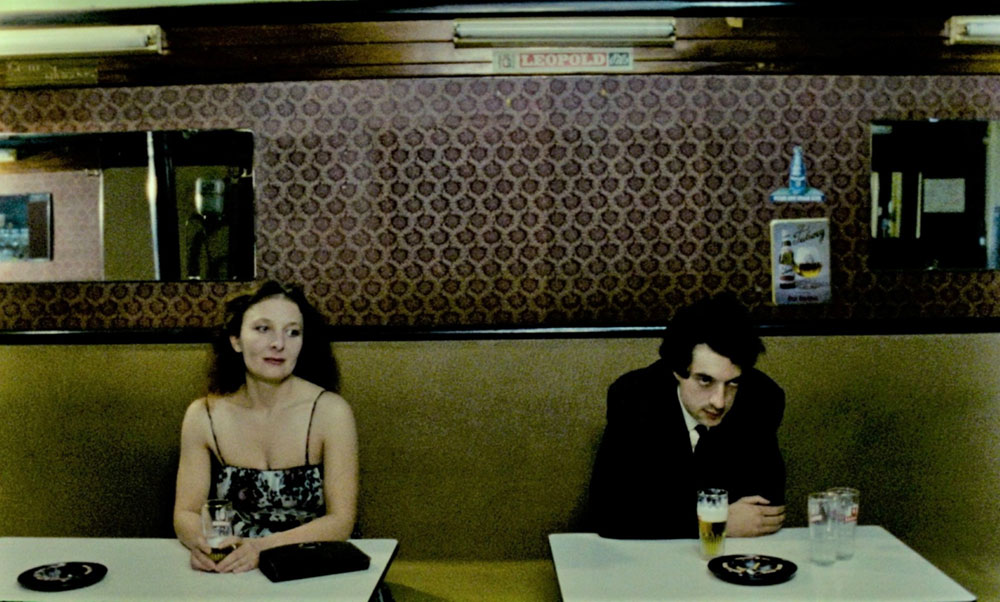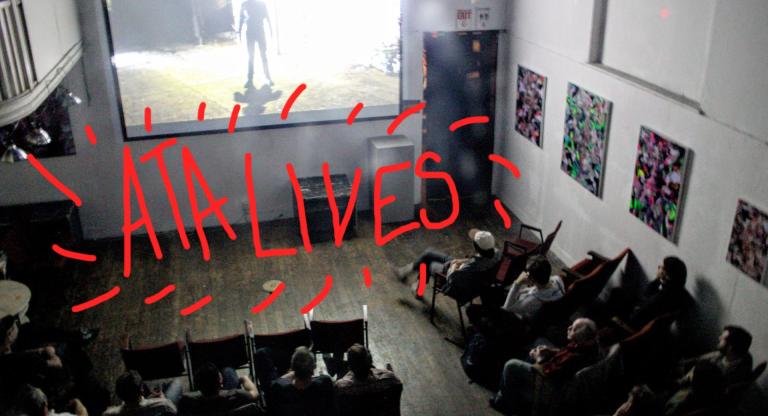In her memoir, My Mother Laughs, Chantal Akerman wrote, “I don’t feel like I have a home or an elsewhere. There’s nowhere I feel at home.” From her roots in Belgium, Akerman traveled to Paris and New York, where her work began in earnest with her solo-directorial feature debut Hotel Monterey (1972). It wasn’t until her return to her hometown of Brussels that Akerman created the film that eventually cemented her legacy as a champion of both feminist and durational modes of cinema: Jeanne Dielmann, 23 Commerce Quay, 1080 Brussels (1975). As remote as Akerman ever felt, it appears she did find some solace in Brussels. It’s a place she returned to cyclically for the rest of her life. In 1982 she released two films set there: Hôtel des Acacias and Toute une Nuit. The former positions Akerman as a stranger to Brussels, the latter makes the city its focus.
From her first short films Saute ma ville (1968) and La Chambre (1972), Akerman understood the power of spaces we inhabit as homes. It’s somewhat startling that a filmmaker as out-of-place in the world as Akerman would gravitate toward the interiors of brick-laid flats rather than the natural escapes of the unsculpted earth. Akerman’s fascination with hotels (particularly in Hôtel des Acacias) are a ready-made symbol of her spiritual displacement, carving out a place of refuge in her hometown, where she might as well have been a tourist.
Hôtel des Acacias was co-directed by Akerman and Michèle Blondeel (who stars in Toute une Nuit). It was made as an exercise at the INSAS audio-visual college in Brussels, where students were invited to join Akerman and Blondeel in a filmmaking exercise. The film follows hotel staff and patrons alike as they pursue what love means to them, often finding comfort in each other. Hôtel des Acacias appears to be as much an exercise for Akerman as it was for the students; she later recreated the dynamics of the lovers from the hotel for her musical Golden Eighties (1986).
The film grapples with the seeming impossibility of love, as one character or another repeatedly struggles with their desires for something that they cannot have. The film’s denouement at a ball leaves the audience with as many questions about love as Akerman ever posed in her career. Sometimes those who deserve love the most don’t receive it, and perhaps more frustratingly for our characters, those who don’t often do at their expense. This pattern is present in Akerman’s filmography and reflected in her own life. My Mother Laughs describes just how unfortunate Akerman’s own encounters with love were, drifting from abuse to abuse without any seeming reprieve. As a dress rehearsal for one of Akerman’s most celebrated works from the 80s, Hôtel des Acacias functions well as a collection of loose musings, but its real charm is to be found in the simple movements of flirtation between its actors—a cradling hug, a departing touch, a full-press embrace that lingers at the lips. The film ends in a glowing ballroom as two unexpected individuals dance their way to bed.
In Hôtel des Acacias, Akerman took a prolonged look at a small group of lovers involved with one other for the whole of its runtime, never privy to the city outside the hotel. In Toute une Nuit she takes a more sparse approach to her characters, allowing the city to play its role as the protagonist.
Toute une Nuit maps a labyrinth of longing, featuring dozens of performers acting out more than thirty vignettes across a single night in Brussels. Most of these scenes are sensual, shedding brief moments of light on one couple or another in the throes of passion, often in reconciliation after some mysterious rupture. Few words are spoken. Akerman’s silences are as synonymous with the director as her predilection toward desire and in Toute une Nuit Akerman centers this fact behind her penchants—a yearning beyond words.
Every story, atomized, becomes part of a larger tapestry unfolding across the city. Each thread is expertly sewn together so that the sultry summer night becomes a world unto itself. This is not only the story of a people, but of a city. The opening shots ground us in Akerman’s Brussels, which reveals itself in stark lines and soft shadows as dusk turns over to the evening and the night glows under streetlights.
Early portions of the film chart the audience through the onset of the night as a restless woman makes her way to a potential lover’s apartment; a man and woman sit separately at a bar before suddenly embracing; a young girl must choose between two suitors for the night; and back to the earlier couple after their embrace as they sway across the empty tiles of the dimly lit bar. Some stories are not returned to. Many strangers are introduced to the audience only to be discarded in the middle of an embrace. Though with Akerman’s sense for cadence, none feel unimportant or underdeveloped.
One striking sequence opens to sheer moonlight curtains being pulled to partition the frame by a young girl. The silhouette of a different girl across a glass door beckons the puller into a garden. The door opens to welcome one to the other; it’s clear that the girls are sneaking out. They run to the fence at the edge of the property and their actions are briefly obscured. The swinging door that opened just a moment ago has collapsed in on their silhouettes as the wind ushers it back into place. The door finishes its jaunt just in time to reveal the two disappearing into the night. These characters have only existed for thirty seconds—a single take—but where more amateur direction could easily leave these sketches half-formed and listless, Akerman imbues every portrait with importance and clarity.
Toute une Nuit draws to a close with the coming of dawn as the audience watches characters they had come to know in the night suddenly reckon with its limits. Coffee is prepared, work begins, and lovers depart from each other for the day ahead. Akerman ends the film in a familiar place, as a couple dances the morning away to end up in each others’ embrace.
“Chantal Akerman in the Golden Eighties”screens this afternoon, February 4, at the Museum of Modern Art as part of “To Save and Project: The 20th Annual MoMA International Festival of Film Preservation.”



